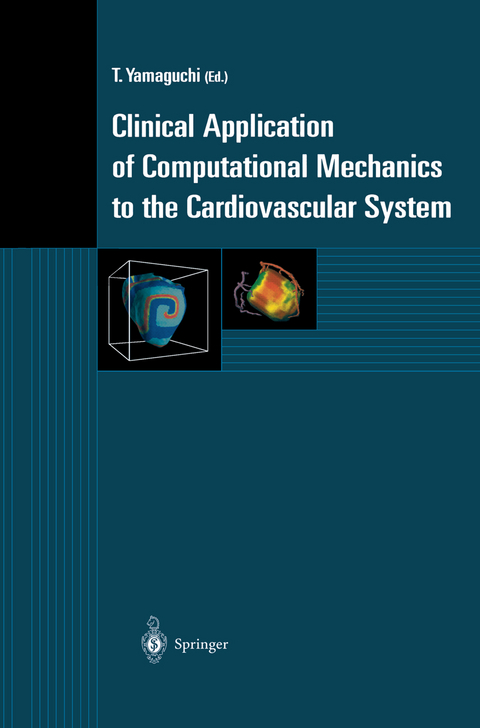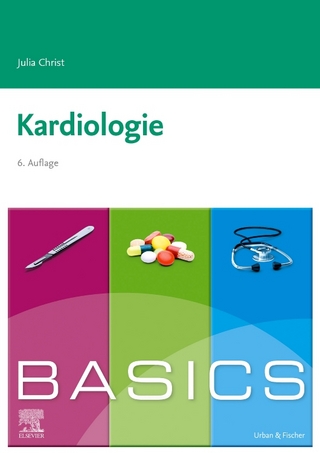
Clinical Application of Computational Mechanics to the Cardiovascular System
Springer Verlag, Japan
978-4-431-70288-7 (ISBN)
1. General Aspects of Computational Cardiovascular Mechanics.- 1.1 Computational Mechanical Model Studies in the Cardiovascular System.- 1.2 Inelastic Constitutive Models of Blood Vessels in Physiological Conditions.- 1.3 Stress and Strain Analyses of Blood Vessels in Physiological and Pathological Conditions.- 1.4 Development of Interactive Modeling System for the Computational Biomechanics Simulation Using Medical Imaging Data.- 1.5 A Modeling System of 3-Dimensional Blood Vessel Configuration for CFD Analysis.- 2. Wall Motion and Blood Flow in the Heart.- 2.1 Computational Analysis for Mechanical Functions of Left Ventricle.- 2.2 Automated Tracking of Tagged Magnetic Resonance Image for Assessment of Regional Cardiac Wall Function.- 2.3 Error Estimation and Smoothing for Regional Deformation Analysis of the Heart with Tagged Magnetic Resonance Images.- 2.4 Deformation Analysis of Human Left Ventricular Wall Using Magnetic Resonance Tagging Technique.- 2.5 Motion and Strain Analyses of Left Ventricular Wall Using Optical Flow.- 2.6 Intraventricular Blood Flow Analysis Using Robust CFD Models.- 3. Interactions Between the Blood Flow and Wall Motion in Vascular System.- 3.1 Computational Fluid Mechanics of the Blood Flow in an Aortic Vessel with Realistic Geometry.- 3.2 Numerical Simulation and Experiment of Pulsatile Flow in Modeled Aortic Arch.- 3.3 Flow Simulation of the Aortic Arch —Effect of the 3D Distortion on Flows in the Ordinary Helix Circular Tube—.- 3.4 Computational Fluid Mechanics of the Vortical Flow in Blood Vessel.- 3.5 Computational Study on LDL Transfer from Flowing Blood to Arterial Walls.- 3.6 Numerical Simulation of Co-operative Regulation in the Cerebral Microvascular Arcadal Network.- 3.7 Computational Fluid Dynamic Simulation of the FlowThrough Venous Valve.- 4. Clinical and Electrophysiological Aspacts of Computational Mechanics of the Heart.- 4.1 A High-Performance Computation Method for Simulation of Cardiac Excitation Propagation Using a Supercomputer.- 4.2 Simulated Electrocardiogram of Spiral Wave Reentry in a Mathematical Ventricular Model.- 4.3 Computational Analysis and Visualization of Spiral Wave Reentry in a Virtual Heart Model.- 4.4 Simulation of Platelet Adhesion Using a Discrete Element Method.- 4.5 Computational Fluid Dynamics as a Tool to Develop the Artificial Heart.- 4.6 Three-Dimensional Image Processing and Motion Analysis of the Heart Using Radionuclide Medical Images.- 4.7 The Modeling of the Heart and the Aortic Arch Applying Differential Geometrical Method and Simulation of Blood Flow.- 4.8 Orientation Response of Stress Fibers in Cultured Cells Under Biaxial Cyclic Stretch: Hypothesis and Theoretical Prediction.
| Erscheint lt. Verlag | 1.12.2000 |
|---|---|
| Zusatzinfo | XXXII, 288 p. |
| Verlagsort | Tokyo |
| Sprache | englisch |
| Maße | 155 x 235 mm |
| Themenwelt | Medizinische Fachgebiete ► Innere Medizin ► Kardiologie / Angiologie |
| Medizin / Pharmazie ► Physiotherapie / Ergotherapie ► Orthopädie | |
| Studium ► 1. Studienabschnitt (Vorklinik) ► Physiologie | |
| Naturwissenschaften ► Biologie | |
| Technik ► Medizintechnik | |
| Schlagworte | Cardiovascular System • CFD • clinical application of computer • computational biomechanics • computer model |
| ISBN-10 | 4-431-70288-1 / 4431702881 |
| ISBN-13 | 978-4-431-70288-7 / 9784431702887 |
| Zustand | Neuware |
| Haben Sie eine Frage zum Produkt? |
aus dem Bereich


